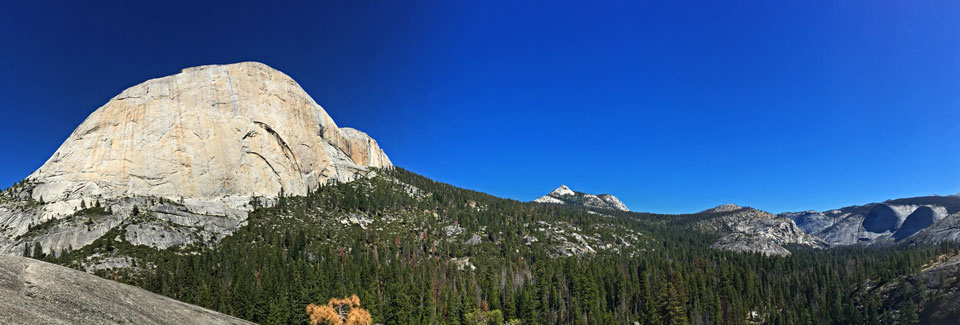
The subject was found a few miles from Little Yosemite Valley, not far from a social trail that leads to climbing routes on Half Dome. The subject was ill-equipped to spend the night out with no shelter, food, water, headlamp, map, or warm layers of clothing. Also, the subject was not carrying his prescribed medication with him, making it challenging for rescuers to manage his medical conditions.
Rescuers hiked the subject back to the ranger station at Little Yosemite Valley and monitored him overnight, taking vitals each hour and developing a care plan with the park’s medical director and the incident commander. In the morning, the incident commander, under the advisement of the medical director, decided to fly the subject from Little Yosemite Valleyto Ahwahnee Meadow in Yosemite Valley, where he could be transferred to an awaiting ambulance.
Lessons Learned
Recreating with medical conditions: Medical conditions should not prevent recreationists from enjoying Yosemite’s vast wilderness; however, proper management of medical conditions is essential for a successful wilderness experience. Whether hiking in a party of two or ten, it is important for fellow hiking companions to be aware of medical conditions in the group and proper treatment and management of medical conditions. Recreationists who are prescribed medication should carry the medication (plus a few extra doses) in a personal pack so that they don’t miss a dose if an outdoor outing goes awry or longer than anticipated.
Hiking preparedness: When preparing for a long day hike, pack extra food, water, and if possible, a water filter. Check the weather before leaving and pack extra layers and a rain jacket even if the forecast calls for warm temperatures and clear sunny skies. Consider carrying a map and compass whether hiking on familiar or new trails. Always pack a headlamp, even if you plan on ending your hike well before dark.
Hiking in a group: The Yosemite Emergency Communications Center frequently receives calls from separated parties, which usually result when groups did not make a plan for where and when to meet in the event they became separated. Fortunately, many of these incidents self-resolve; however, a few become search and rescue incidents when the separated parties fail to reunite. When hiking in a group, be sure to account for all members of the group while hiking and develop a plan with group members before separating from the group.
